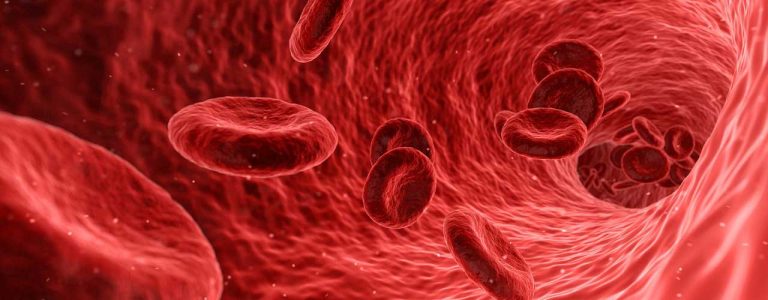This article will explore the effects of clonazepam on the body, how long Klonopin will stay in your system, and it will provide information on what the treatment process for overcoming clonazepam looks like, and what options are available to people.
What Is Clonazepam?
Clonazepam (also referred to by its brand name Klonopin) is a form of long-acting benzodiazepine prescription drug. Doctors typically prescribe Klonopin to people who suffer from a panic disorder, regular panic attacks, muscle spasms, anxiety disorders, seizure disorders, or epileptic fits.
Clonazepam is a type of benzodiazepine which is a form of depressant drug that produces effects on the central nervous system. In particular, Klonopin enhances the effects of GABA (Gamma-aminobutyric acids) on the central nervous system. Clonazepam is only legally available as a form of a prescription drug, and it comes in the form of a swallowable tablet.
Moreover, Klonopin falls under the classification of being a Schedule IV controlled substance, and this means that when people are prescribed Klonopin, there is a high chance that it can be addictive.
Get help: Orange County Rehabs
How Long Does Klonopin Stay In Your Body?
Drug Half Lives
Clonazepam has what is known as a ‘long half-life’, and this means that it can stay in your system for anywhere between six to nine days, or even up to several weeks in some cases. A half-life refers to the time that it takes for the body to absorb or eliminate half of the drug taken.
Drugs can either have a short or a very long half-life. Moreover, clonazepam has a long half-life that can last somewhere between 20-50 hours initially, while traces of Klonopin use remain in the system for weeks after.
Clonazepam (just like other benzodiazepines) will show up on a drug test. When a blood test is taken for clonazepam use, the drug may be detectable within the body for a minimum of two half-lives, although it can be higher. In terms of hours and days, this translates to around 80 hours, or 3 days respectively.
For the other various drug tests, the results will differ. For instance. saliva tests will typically reveal clonazepam use within a 5-6 day window. Elsewhere, urine tests can identify Klonopin abuse within a window of up to 30 days.
Hair follicle tests can reveal clonazepam use for up to four months (or between 90 to 120 days) in some cases. This is due to the fact that hair grows by at least 1cm every month, and hair can essentially reveal a user’s previous drug use. Since Klonopin is a long-acting benzodiazepine, this also increases the likelihood that it will remain within the user’s hair for a longer period of time, and therefore, it will still be picked up in the drug test.
It is also important to note that there is a range of factors that affect drug tests during the drug screening process. For example, these are a few of the factors that affect drug test results:
- amount of use
- strength of the dose they have taken
- how long the user has been taking Klonopin
- the user’s weight and BMI (Body Mass Index)
- liver function
- whether or not they are taking other forms of medication that may affect the results of a drug test
- urine concentration
- their age
- the rate of their body’s metabolism
- their genetics
The Side Effects Of Clonazepam
Taking too much Klonopin can result in psychological dependence and physical dependence on the drug, as well as several side effects including:
- feelings of nausea
- dry mouth
- blurred vision
- a runny nose
- sore gums
- diarrhea
- frequent headaches
- drowsiness
- weakness
- constipation
- increased blood pressure
- a potentially dangerous heart rate
- loss of memory
- confusion or impaired cognitive functions
- a loss of orientation
- difficulty sleeping or insomnia
- feelings of irritability
- depression
- seizures
- tremors
In addition, combining Klonopin with other drugs can result in respiratory problems, a coma, or even sudden death.
Clonazepam Withdrawal Symptoms
The short-term clonazepam withdrawal symptoms may include:
- headaches
- hallucinations
- nausea
- continual sweating
- pains in the stomach
- frequent tremors
- fatigue
- dizziness
- feelings of confusion
- anxiety
- depressive feelings
- seizures
- suicidal thoughts
These withdrawal symptoms may last up to two weeks after a person has quit abusing Klonopin; however, some of the symptoms can last between a week to a month.
The longer-lasting withdrawal symptoms may include the development of conditions such as catatonia, as well as frequent shifts in body temperature, respiratory levels, blood pressure, behavioral issues such as aggressiveness, extreme drug cravings, mood swings, feelings of disconnect from everyday life, impairment to the pleasure drives within the brain, and more.
What To Do In The Event Of A Clonazepam Overdose
The best immediate course of action in the event of a clonazepam overdose is to call 9-1-1 and request medical assistance. If people respond quickly, the effects of an overdose can be reversed and people can be saved from an overdose-related death.
In addition, people should proceed to check on the clonazepam user’s airways, to make sure they are still breathing. They should use CPR if necessary, and then they should put the person in the recovery position by carefully rolling the individual onto their side, and then proceeding to bend the user’s leg, making sure that their hip and knee are in a right angle.
If the individual is still conscious, it is very important to try and keep them as calm as possible. Keeping them calm could potentially prevent their symptoms from worsening because if they panic, this could exacerbate their symptoms.
If the individual goes into cardiac arrest, it may still be possible to save the individual. If a person has taken a dangerous amount of clonazepam and has gone into cardiac arrest, the healthcare professionals on hand can potentially restart the patient’s heart. Timing is everything, and the faster a person receives help, the better the chance of their life being saved.
Moreover, if medical assistance is taking time and the person with them happens to have medication with them, they could potentially use it to reverse the effects of the overdose. For instance, one commonly used form of medication given to people during a benzodiazepine overdose is flumazenil.
This particular medication prevents benzos from binding with GABA receptors, which in turn can cause problems to the individual’s central nervous system. It is advised that this only be done under the supervision of a medical professional, as mistakes can be made in terms of dosage, or in terms of when and how a medication should be taken in the event of an overdose.
Signs and Symptoms of a Clonazepam Overdose
The signs and symptoms of a potential clonazepam overdose that people should look out for include drowsiness, confusion, poor or impaired coordination, delayed reflexes, restricted or slower breathing, a loss of consciousness, or a coma state.
Getting Help For Clonazepam Addiction
For Klonopin addiction, or addictions to other drugs, there is a range of different addiction treatment options available that can help people get back in control of their lives, making decisions that will benefit their well-being, rather than hindering it.
In the short-term, addiction treatment can involve undergoing the detoxification process at a medical facility or at home. This can last anywhere between two weeks to a month, depending on the severity of the addiction, as well as the health and overall well-being of the patient.
The patient will need to decide whether or not to opt for inpatient or outpatient addiction treatment. Typically this decision will come down to factors such as the location of the proposed medical facility that they are considering seeking treatment from, how the treatment options affect their day-to-day lives in terms of work and family commitments, and they will also need to consider what their health insurance may allow.
For long-term recovery options, patients can receive advice and treatment from a medical professional or a team of professionals on hand at residential treatment facilities. These rehab facilities can offer a treatment placement tailored to the patient’s individual needs.
They can provide prescription medication that will help people handle their withdrawal symptoms as well as endure the detoxification process, and throughout the course of the treatment placement. Rehab treatment centers can ensure that patients experience a safe withdrawal from clonazepam.
Thereafter, an addiction treatment program can help people to achieve long-term recovery through therapeutic drug monitoring and drug testing programs, through access to continued therapy and counseling, and via 12-step and 4-step programs (such as SMART recovery) that help to provide people with the coping mechanisms, knowledge, and the means to build the confidence they need to overcome their addiction and prevent future relapse.
CBT (Cognitive Behavioural Therapy) is a form of therapy that is available at many residential treatment facilities. CBT can be used to help people learn how to respond better to instances where they feel as though they might require or be dependent upon clonazepam.
Motivational interviewing is another form of therapy that enables people struggling with clonazepam addiction to set goals for themselves and then plan steps towards achieving those goals.
The thought process behind this therapy is that the individual facing the addiction is the only person who can make the changes necessary to change their lives and improve their behavior. In general, motivational interviewing can be used to rebuild people’s confidence in themselves.
Contingency Management (also referred to as ‘motivational incentives’) is an approach to therapy that involves giving people rewards and incentives in order to encourage them to abstain from drug use. Meeting goals throughout the treatment process will result in the patient being rewarded with these treats and incentives.
If you are interested in pursuing treatment options further, contact Cornerstone for more information. This is a premier drug and alcohol rehab center that also treats mental health issues. The expert staff can answer your questions and design an individualized treatment plan that will set you on the road to recovery.






